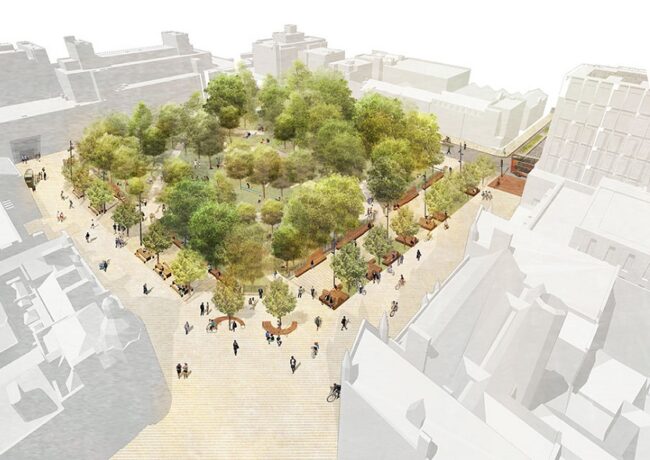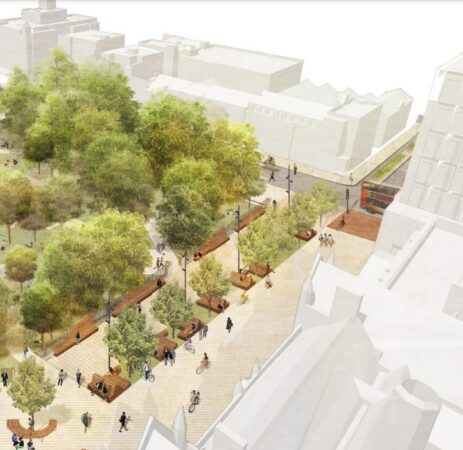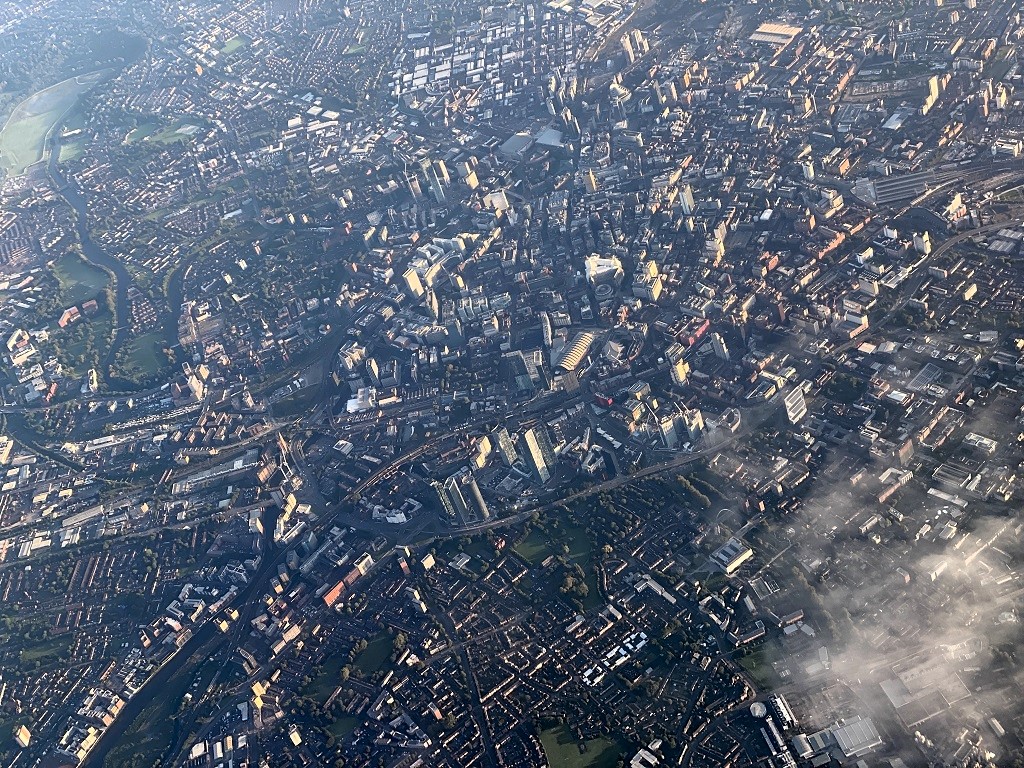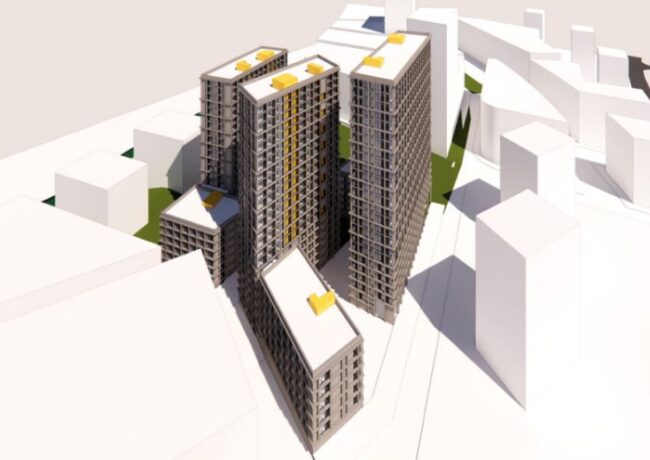MMU’s All Saints Park upgrade progresses
Pedestrianising surrounding roads, creating a performance space, and eliminating pinch points feature in Manchester Metropolitan University’s plan to overhaul the Oxford Road green space.
Approved by Manchester City Council this week, the 4.2-acre revamp is part of the university’s wider 10-year estate strategy that saw the arts and humanities building next to the park complete last year.
Elsewhere, the £35m school of digital arts is under construction, as are the institute of sport and the 161,500 sq ft science and engineering campus, both designed by BDP.
As well as All Saints Park, the public realm project includes several surrounding roads, Lower and Higher Ormond Street, Cavendish Street and Jenkinson Street.
Under the plans, designed by landscape architect Planit-IE, the surrounding roads are to be pedestrianised, expanding the area of public realm.
Additionally, the project features a number of improvements to the park itself.
An events space capable of hosting performances, food fairs, and pop-up markets is to be created at the centre of the park.
Pinch points, particularly fronting Oxford Road, are to be addressed by removing sections of the park wall to widen existing entrances or create new access points.
Of the existing 59 trees at the park three will be removed while a further 30 are to be planted, according to the plans.
Other improvements include new street furniture, lighting, and bins while the footpaths and areas of hardstanding are to be upgraded using high-quality materials.
Deloitte Real Estate is the planning consultant for the project.







So, fewer roads and no metro as an alternative. I see Manchester and London are placing great emphasis on old peoples’ (and even healthy peoples’) legs. Few will take buses for very good reasons. Manchester has lost its dynamism. Leadership is awful now. They are a provincial minded team now, instead of the global dynamic one they once were. 2-up 2-down housing now making appearances in totally inappropriate places again, with no active frontage in so many developments, no urban rail expansion plan other than a Stockport and Salford University extension (and that’ll be lucky even in the next decade!). In transport, Liverpool is ahead in this regard. Culturally it’s ahead, commercially not so much. A shame Manchester cannot get the metro it needs. Trams don’t cut it and there’s no money for more electrification and new lines. Manchester is now stalling in my opinion despite the cranes. Small businesses can’t get goods to shops and that is before we talk of the emergency services that state themselves that pedestrianisation is hurting their ability to respond. Virtue signalling comes at great cost.
By Richard
@Richard
Pedestrianisation of streets usually allows for emergency vehicles and buildings to be serviced. Personally, I think pedestrianisation of sections of Manchester is fantastic based on what we saw during the COVID period.
The Salford Crescent and Stockport Metrolink extensions are the most recent extensions. There’s also extension plans for the Middleton, Bolton, Port Salford and additional stops around Manchester Airport to coincide with the delivery of HS2.
I imagine the bus franchising system will help increase bus users.
By Anonymous
Richard – some of the best, most liveable cities around the world have pedestrian-priority streets. The likes of Amsterdam, Copenhagen, Vancouver etc top world living indices year on year, and they all have one thing in common. In contrast, how often do you see car-centric cities like Coventry and Milton Keynes topping these lists? Restricting car access and prioritising pedestrians is nothing to be afriad of – just look at how vibrant Ancoats and the Northern Quarter are now that cars have been banished.
By Anonymous
Richard I think you’ll find most of the city reports disagree with you. Manchester and London may be streets ahead when it comes to developing an integrated transport systems as well attracting Jobs etc but that doesn’t mean smaller cities like Bradford or Liverpool can’t learn the lessons and do the same. It starts with building the right infrastructure and attracting investment. All successful cities go through the same phases. It may take decades but every journey starts with a first step.
By David J